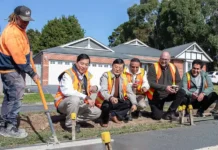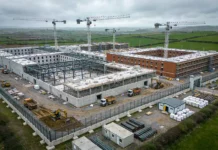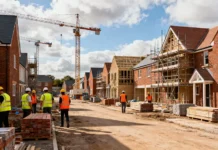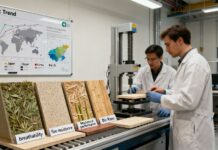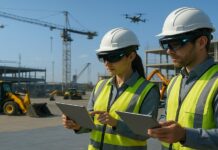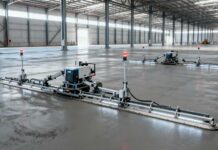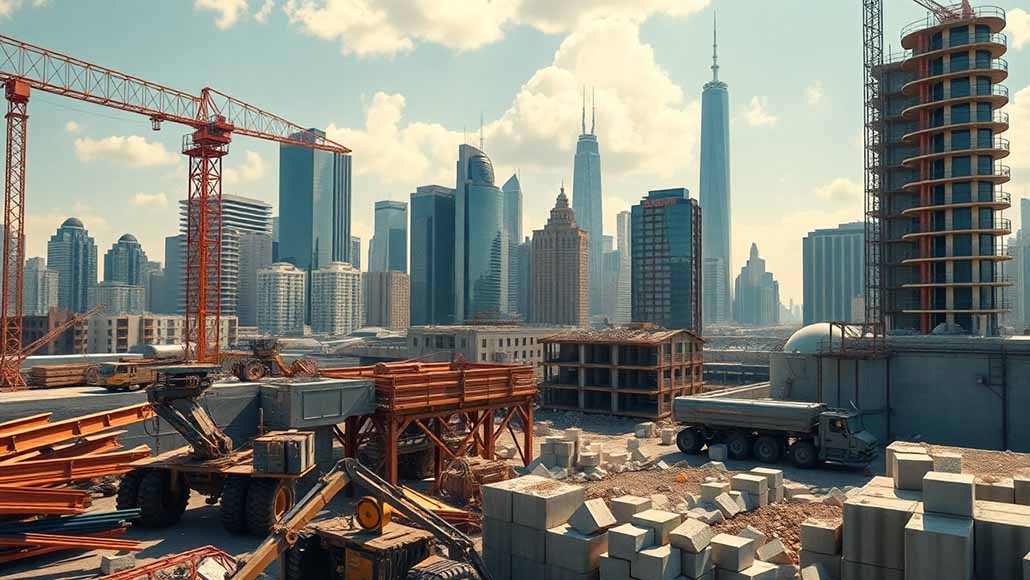As urban areas continue to expand and infrastructure demands escalate, the construction industry faces a critical challenge in how to build sustainable, resilient structures without depleting finite natural resources. The concept of urban mining is the process of reclaiming valuable materials from existing buildings, infrastructure, and waste, coupled with innovative material reuse strategies, is emerging as a transformative solution for the future of construction. These approaches are not merely environmentally friendly; they are redefining the economic, logistical, and environmental paradigms of urban development.
The Concept of Urban Mining
Traditionally, the construction industry has relied heavily on the extraction of raw virgin materials. From quarrying limestone for cement to metal mining for infrastructure, the social and environmental costs have been enormous. Urban mining turns this on its head by looking at cities as treasure houses of resources—decommissioned structures, roads, and industrial buildings as sources of recyclable material.
Urban mining is the process of systematically recovering metals, concrete, bricks, glass, and other materials from existing structures. It seeks to decrease dependence on conventional extraction, reduce waste generation, and make more circular economies possible within urban contexts. Rather than digging up new raw materials, cities are their own resource mines, and construction becomes more sustainable and resilient.
Innovations in Material Reuse and Recycling Technologies
The success of urban mining depends on advanced recycling technologies capable of efficiently reclaiming, processing, and reintegrating materials into new construction projects. Innovations in sensor-based sorting, chemical processing, and material stabilization have made it feasible to extract high-value resources from mixed waste streams with high purity levels.
For example, magnetic and eddy current separation technologies are now used to separate metals from demolition waste more efficiently. Revolutionary chemical treatment technologies can transform contaminated concrete waste into high-quality aggregates or cement replacement materials. New binder technologies enable recycled materials like crushed concrete or glass to be used as prime material in new concrete mixtures, minimizing reliance on virgin cement and aggregate.
In addition, the combination of digital twins and AI analytics allows for real-time tracking of material quality, maximizing resource recovery operations, and monitoring the life cycle of recycled material from demolition to construction.
Impact on Construction Economics and Sustainability
The economic implications of urban mining and material reuse are profound. Reducing dependence on imported raw materials lowers project costs and mitigates supply chain disruptions. At the same time, the use of recycled materials fits with the worldwide trend toward sustainability, where numerous governments and cities are now integrating circular economy thinking into planning policy.
From a life-cycle viewpoint, buildings built using reclaimed materials have less environmental footprint, such as lower emissions related to raw material extraction, processing, and transportation. This is also an approach that increases the resilience of urban infrastructure by minimizing exposure to unavailability of raw materials due to geopolitical instabilities or raw material shortages.
Market forecasts indicate a high growth in the use of recycled materials in construction works across the globe. Industry players predict that by the early 2030s, most urban development will include massive percentages of reclaimed material, triggered by regulatory drivers, technological development, and public preference for sustainable development.
Case Studies and Current Applications
Across the globe, pioneering projects demonstrate the viability and advantages of urban mining. In Europe, several cities have established extensive programs for reclaiming concrete from demolished buildings, transforming it into high-grade aggregate for new structures. These initiatives showcase significant savings in material costs and a reduction in construction landfill volumes.
In Asia, visionary modular construction companies are incorporating reused wood, steel, and concrete in high-rise developments with a focus on circular economy. These developments not only reflect environmental advantages but also community participation and urban resilience by cutting the reliance on conventional resource imports.
Moreover, the emergence of building deconstruction rather than demolition facilitates selective salvage of beneficial materials. This methodology offers a clean feedstock that is far superior in recycling quality to conventional demolition waste.
Challenges and Future Outlook
Despite encouraging trends, several challenges inhibit the widespread adoption of urban mining and material reuse. Technical issues like uneven quality of recycled products, contamination problems, and constraints in existing processing technology must be overcome through research and development.
Regulatory and legislative systems are also changing, but regional inconsistencies slow the harmonisation of recycled material applications. International standards and certification procedures will be essential to establishing stakeholder confidence and ensuring performance and safety.
The perception barrier persists, as stakeholders tend to view recycled materials as inferior or unstable. Public education, openness in quality assurance, and certification schemes will be key to dispelling these myths.
Looking ahead, the convergence of digital twins, AI, and blockchain technology has the potential to transform the material lifecycle management by facilitating real-time tracking, quality control, and transparent crossing of project phases from deconstruction to new construction.
Industry analysts estimate that the take-up of urban mining and reuse methodologies will move at a faster pace, spurred on by climate pledges, technological change, and economic benefits. By 2032, they anticipate a new paradigm where materials that have been reclaimed will make up a significant percentage of urban infrastructure, radically reshaping the construction industry’s future.
Conclusion: Reimagining Urban Development for a Sustainable Future
Urban mining and material reuse are no longer fringe ideas but central to shaping sustainable, resilient cities worldwide. They offer a practical route to mitigating environmental pressures, preserving natural resources, and generating economic benefits in urban systems.
The convergence of technological advancements, policy encouragement, and societal awareness provides a rich terrain for revolutionary change. With systematic investments in recycling infrastructure, standardization, and enhanced sorting and processing technologies, urban mining can be a bedrock of sustainable urban development.
This paradigm shift holds a promise of a more sustainable, efficient, and resilient future, where resources are constantly cycled back into the city itself, closing the urban development and environmental management loop.






